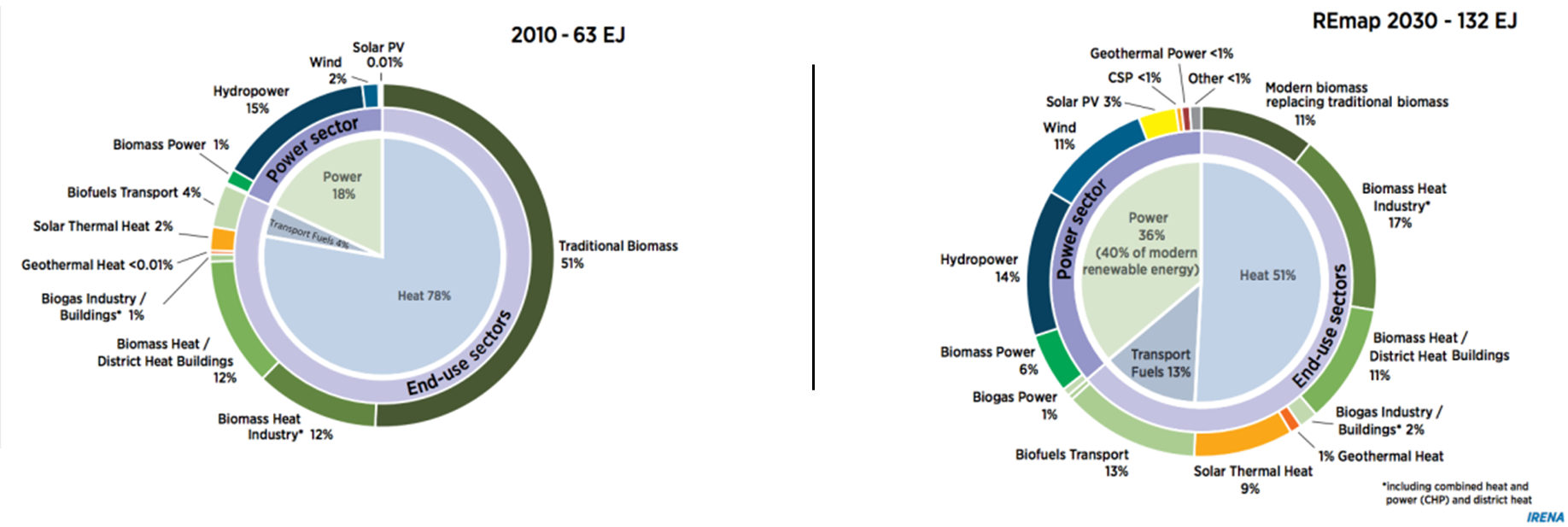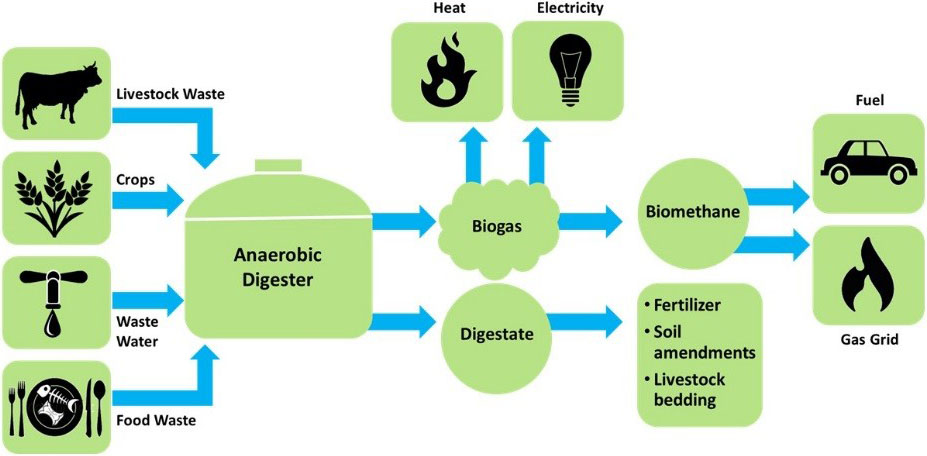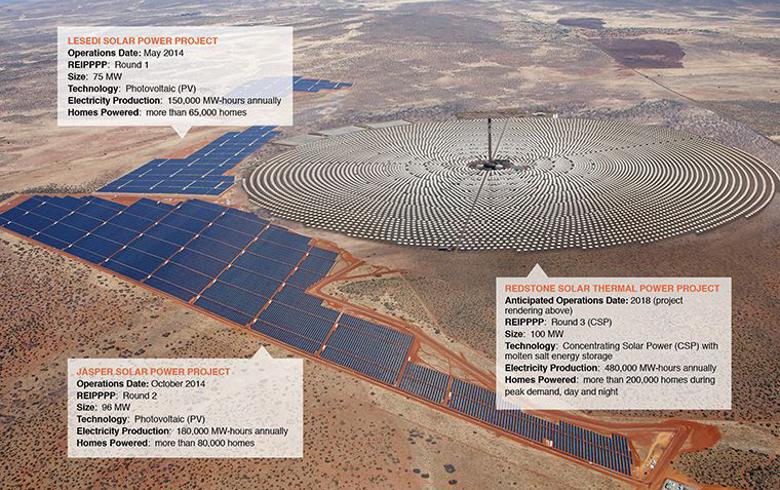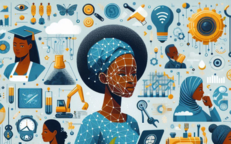Leveraging Renewable Energy To Address Africa’s Energy Challenges

This is the 38th post in a blog series to be published in 2021 by the Secretariat on behalf of the AU High-Level Panel on Emerging Technologies (APET) and the Calestous Juma Executive Dialogues (CJED)
The African continent’s demand for affordable energy options is increasing as its population increases at alarming rates. Africa is richly endowed with abundant minerals and energy resources that are fairly dispersed throughout the continent. It is, however, currently barely exploiting these energy sources to power the continent, despite the abundance potential of energy sources to sustain the continent’s needs.
Approximately 600 million Africans are currently living without access to reliable energy services.[1] Research data shows that the electric energy generation capacity for most African countries is approximately 28 Gigawatts[2]. South Africa produces approximately 40,000 megawatts (i.e., about 39 gigawatts) of electricity, which is the highest of any African country.[3]
Despite the significant efforts towards achieving sustainable and steady socio-economic development and growth, the power shortages, restricted access to electricity, and predominantly depending on biomass fuel sources undermines poverty-reduction efforts across the continent.[4] This is because energy usage substantially impacts all aspects of socio-economic development activities such as job creation, wealth creation, healthcare, nutrition and food security, clean water supply, civil infrastructural development, and education. Furthermore, life expectancy is significantly related to the consumption of energy per capita.[5]
Most local African communities turn into fossil fuels for energy generation. The continent is also endowed with abundant fossil fuels, even though there have been growing global warming concerns against fossil fuels - in favour of renewable energy.[6] Regrettably, there have been approximately 600,000 fatalities related to energy pollution deaths each year in Africa due to fossil fuels.[7] The utilisation of traditional biomass energy sources such as firewood and charcoal have been reported as the main drivers of deforestation. This is significantly contributing to climate change and global warming across the globe. Climate change and global warming have resulted in unpredictable rainfall patterns and sometimes limited rainfall. Subsequently, this has negatively impacted hydroelectric generation in Africa as this type of power generation substantially depends on available water bodies.
The continent has the potential of focusing on renewable energy sources such as hydropower, biomass, and solar energy and sufficiently provide electric energy to the citizenry. In addition, geothermal energy is under consideration, but environmental concerns still need to be addressed concerning radioactive waste materials.[8] Therefore, augmented investments towards renewable and efficient energy sources with sufficient storage capacity such as solar, wind and thermal power and biogas energies should be pursued. This is vital for the African continent so to accomplish AU’s Agenda 2063 aspirations.
The International Renewable Energy Agency (IRENA) is an intergovernmental organisation meant to facilitate the cooperation between countries regarding renewable energy, advance knowledge and skills capacity of renewable energy, and promote the adoption and sustainable use of renewable energy. IREN’ ’s Africa 2030 report established a wide-ranging renewable energy roadmap (REmap) for African countries’ energy transition, which is envisaged to illuminate a viable path to robust and sustainable renewable energy development.[9] A part of the ongoing global REmap 2030 analysis is built on a country-by-country assessment of supply, demand, renewable energy potential and technology prospects.[10] Fundamentally, this plan highlights the possible roles of various renewable energy technologies across the five regions of Africa until 2030. In this way, the different countries can determine viable renewable energy options relevant and cost-effective for their countries.

Figure 1: A breakdown of Global Energy Use in 2010 against Remap 2030 by technology and sector[11]
Africa is currently accelerating the adoption of clean energy solutions in alignment with the African Union’s (AU’s) Agenda 2063, Goal Number 7 and United Nations’ Sustainable Development Goal Number 7. These goals advocate for environmentally sustainable and climate-resilient economies and communities utilising affordable and clean renewable energy sources.[12] By tackling Africa’s energy challenges using sustainable and renewable energy, there should be a steady commitment towards an accelerated adaptation of modern renewable energy sources in Africa.[13] For example, African countries such as Egypt, Ethiopia, Kenya, Morocco and South Africa are progressively steering this renewable energy effort. Other African countries such as Cabo Verde, Djibouti, Rwanda, and Eswatini have also established ambitious renewable energy targets.[14] Notably, other African countries are following suit, and renewable energy is progressively being adopted across the continent.
The African Union Panel on Emerging Technologies (APET) advises African countries to expand the necessary infrastructure suitable for renewable energy technologies. Such efforts can enable African countries to seamlessly provide affordable, clean, and efficient renewable energy to all citizenry while sustainably growing their economic activities. APET is encouraging African countries to consider adopting, adapting, and upscaling renewable energy innovation and accompanying technologies to bridge the existing gap of energy access across the African continent. Most importantly, since renewable energy is derived from natural sources that can replenish themselves in less than a human lifetime and without depleting the planet’s resources, renewable energy can be pursued.[15] Therefore, renewable energies can be utilised sustainably and affordably across the continent with limited emissions of greenhouse gases and pollutants.
Biogas energy is currently gaining traction in Africa to adequately address the energy demands cost-effectively among the impoverished African households currently without energy access. The biogas is generated through the anaerobic digestion of organic waste such as human waste, animal waste, and kitchen waste.[16] Consequently, this makes the biogas technology ideal for most African countries with limited waste sanitation facilities. For example, the biowaste digester can easily be connected to the biodegradable waste to generate methane gas. Subsequently, methane gas can be utilised as a source of energy for various economic activities. Notably, as the waste material decomposes, it generates methane gas that can be channelled into cooking fuel and heating of homesteads. Furthermore, the remaining waste can then be utilised as a fertiliser for local farming and gardening activities.

Figure 2: Biogas - Converting Waste to Energy[17]
Notably, several African countries have progressively harnessed biogas as an energy resource option. For example, Kenya has increasingly installed biodigesters whereby cow dung generates energy for cooking stoves, farm equipment, smartphone charging, and shower heating. This is observed mainly within local farmers in Kenya.[18] Notably, this technology has been under pursuit by Kenya since the 1950s. However, it has gained traction recently because the Kenya Biogas Programme (KBP) has been actively promoting this energy option to be upscaled and commercialised since 2009. This technology is finding applications within Kenya’s schooling facilities and slum latrines in Nairobi because of the abundant human waste being generated and inadequate sanitation options.[19] In this way, this energy option is solving the sanitation challenge of Kenya.
Malawi is also steadily and progressively harnessing renewable biogas energy to power prisons in Mulanje, in the southern part of Malawi. In these prisons, the biogas energy is generated by utilising the human waste from the prisoners to enable cooking their meals. This initiative was established by the United Purpose International Charity Organisation in partnership with the Malawi government. This was initiated in an attempt to control deforestation within the district. Malawi had already experienced uncontrollable deforestation in search of timber, charcoal, and firewood for cooking.[20]
A majority of rural Tanzania substantially depends on traditional fossil fuels for lighting and cooking. Consequently, this exerts tremendous pressure on the country’s forests coverage.[21] Thus, to mitigate the negative effects of deforestation and reliance on fossil fuels, Tanzania has implemented a Njombe District Biogas Project. This biogas project sought to utilise dairy cattle dung in power generation to power their homesteads in partnership with the Norwegian University of Life Sciences and Tanzanian Domestic Biogas Programme (TDBP). Consequently, this biogas project reported improved livelihoods of rural women and children and reduced deforestation.
APET is noticing the efforts by African countries towards adopting renewable energy sources. However, the uptake of biogas technology remains limited because of inadequate investment in renewable technologies. Therefore, APET is encouraging augmented investments towards renewable energy through collaborative public-private partnerships. By encouraging biogas generation, African governments will not only be solving sanitation and environmental challenges as per the AU’s Agenda 2063 aspirations but also increasing local entrepreneurship, more especially for women and the youth. Furthermore, African countries should increase infrastructure and skills for biogas generation, installation, maintenance, and distribution.
APET believes that African countries can implement modern renewables to eliminate the rampant power shortages and afford electricity and development opportunities to rural Africa. As such, this can benefit rural communities by spurring industrial growth, create entrepreneurship, and support jobs and wealth creation across the African continent. APET believes that modern renewables can also transform inexpensive energy into a cleaner and reliable power sector. Notably, some renewable energy technology solutions can easily be implemented when the required enabling environment is created. This calls for African governments to create suitable policy, regulatory, governance and financing mechanisms and frameworks to enable seamless adoption and adaptation of renewables. Interestingly, several African countries are positively establishing the necessary enabling environment to bolster renewable energy uptake. This includes promoting enabling policies towards investment promotion and regional collaboration.
For example, the concentrating solar-thermal power (CSP) technology is being implemented to generate electricity by converting energy from sunlight to power a turbine. However, the same basic technology can effectively deliver energy to various industrial applications such as water desalination, enhanced oil recovery, agricultural activities, and food processing, among others.[22] Notably, the deployment of Africa’s CSP is in its infancy, as is the case worldwide. For example, some African countries such as Algeria, Egypt, Morocco, and South Africa have installed a total of six CSP projects since March 2015. Their installed capacity aggregated to approximately 180 megawatts.
Furthermore, CSP installation projects summing up to approximately 6.4 gigawatts are ongoing in African countries such as Botswana, Namibia, Sudan, and Tunisia.[23] Notably, CSP is appealing because the technology’s efficiency improves with increasing irradiation levels. However, this is not the case with solar photovoltaic (PV) technology that has demonstrated efficiency declines when collector temperature increases.

Figure 3: The Redstone solar thermal power project in Kimberly, Northern Cape Province, South Africa[24]
In all African regions, except for North Africa, hydropower is continually being considered with significant potential to grow. Further to this, North, Eastern, and Southern Africa can potentially obtain renewable wind energy while bolstering the solar power options. However, this transformation may require approximately US$ 70 billion in investments per year between 2015 and 2030. Of that amount, approximately US$ 45 billion could be channelled towards energy generation capacity. The US$ 25 billion could be invested towards transmission and distribution infrastructural frameworks.[25] Therefore, such investments towards renewable energy generation capacity could present opportunities towards creating substantial new business activities in Africa. Typically, increasing renewable energy penetration across socio-economic developmental sectors can provide enormous socio-economic benefits to African communities and improve human health.
In conclusion, APET is aware that the benefits of renewable energy investments can surpass the investment costs in the long run. This is partly because of the abundance of biomass, geothermal, hydropower, solar, and wind resources in Africa that are typically considered the best in the world. Furthermore, the abundance and high quality of renewable energy resources render renewable energy economically competitive, more especially because the costs of renewable technologies are hastily declining. Recent renewable-energy project deals have established that Africa will produce and supply renewable power at some of the lowest costs worldwide. Thus, substantially investing towards renewable energy sources can significantly assist Africa to provide sustainable and renewable energy to all citizenry in a reliable manner.
Featured Bloggers – APET Secretariat
Justina Dugbazah
Barbara Glover
Bhekani Mbuli
Chifundo Kungade
[1] https://www.irena.org/newsroom/pressreleases/2020/Apr/African-Union-and-IRENA-to-Advance-Renewables-in-Response-to-Covid19.
[2] https://www.weforum.org/agenda/2016/11/understanding-africas-energy-needs/.
[3] https://www.usaid.gov/powerafrica/south-africa.
[4] https://acetforafrica.org/highlights/leveraging-renewable-energy-for-growth/?gclid=Cj0KCQjw5JSLBhCxARIsAHgO2Sdb88CYhkZUs66ZotM05jMqA2HSz7G7F5XeK9ZOchP5YRydY-BzeCwaApm8EALw_wcB.
[5] Philip J. Lloyd, The role of energy in development, Journal of Energy in Southern Africa 28(1): 54–62. DOI: http://dx.doi.org/10.17159/2413-3051/2017/v28i1a1498.
[6] https://www.iea.org/reports/africa-energy-outlook-2019.
[7] https://energytransition.org/2021/03/fossil-fuels-killer-air-pollution-south-africas-death-toll/.
[8] Hrefna Kristmannsdóttir, Halldór Ármannsson, Environmental aspects of geothermal energy utilization, Geothermics, 32 (4–6) 2003, 451-461.
[9] https://www.irena.org/-/media/Files/IRENA/Agency/Publication/2020/Feb/IRENA_Africa_Impact_Report_2020.pdf?la=en&hash=B1AD828DFD77D6430B93185EC90A0D1B72D452CC.
[10] Dolf Gielen, Francisco Boshell, Deger Saygin, Morgan D. Bazilian, Nicholas Wagner, Ricardo Gorini, The role of renewable energy in the global energy transformation, Energy Strategy Reviews, 24, 2019, 38-50.
[11] https://cleantechnica.com/2014/01/22/remap/
[12] https://mo.ibrahim.foundation/sites/default/files/2019-10/African_Governance_Report_2019.pdf.
[13] https://www.irena.org/newsroom/pressreleases/2021/Jun/Universal-Access-to-Sustainable-Energy-Will-Remain-Elusive-Without-Addressing-Inequalities.
[14] https://www.irena.org/-/media/Files/IRENA/Agency/Publication/2015/IRENA_Africa_2030_REmap_2015_low-res.pdf.
[15] https://www.ren21.net/why-is-renewable-energy-important/.
[16] http://www.scielo.org.za/scielo.php?script=sci_arttext&pid=S1021-447X2017000200001.
[17] https://www.eesi.org/papers/view/fact-sheet-biogasconverting-waste-to-energy
[18] https://www.africanews.com/2019/08/06/kenyan-farmers-make-use-of-biogas//.
[19] https://www.news24.com/news24/africa/news/watch-poo-lieve-it-or-not-recycling-human-waste-in-nairobi-is-cleaning-up-the-slums-20191011.
[20] https://www.rfi.fr/en/africa/20210319-malawi-using-prisoner-poop-converted-to-biogas-for-cooking.
[21] https://www.dw.com/en/biogas-benefits-in-tanzania/a-17753289.
[22] https://www.energy.gov/eere/solar/concentrating-solar-thermal-power.
[23] https://media.africaportal.org/documents/09Edkins-etal-Rollout_of_CSP.pdf.
[24] https://helioscsp.com/acwa-power-solarreserve-to-break-ground-on-100-mw-concentrated-solar-power-plant-in-south-africa/
[25] https://www.irena.org/-/media/Files/IRENA/Agency/Publication/2015/IRENA_Africa_2030_REmap_2015_low-res.pdf.


